How many times have you come across a recipe that says add The Juice of One Lemon? Ok, no problem except for the fact that lemons come in different sizes. Now what?
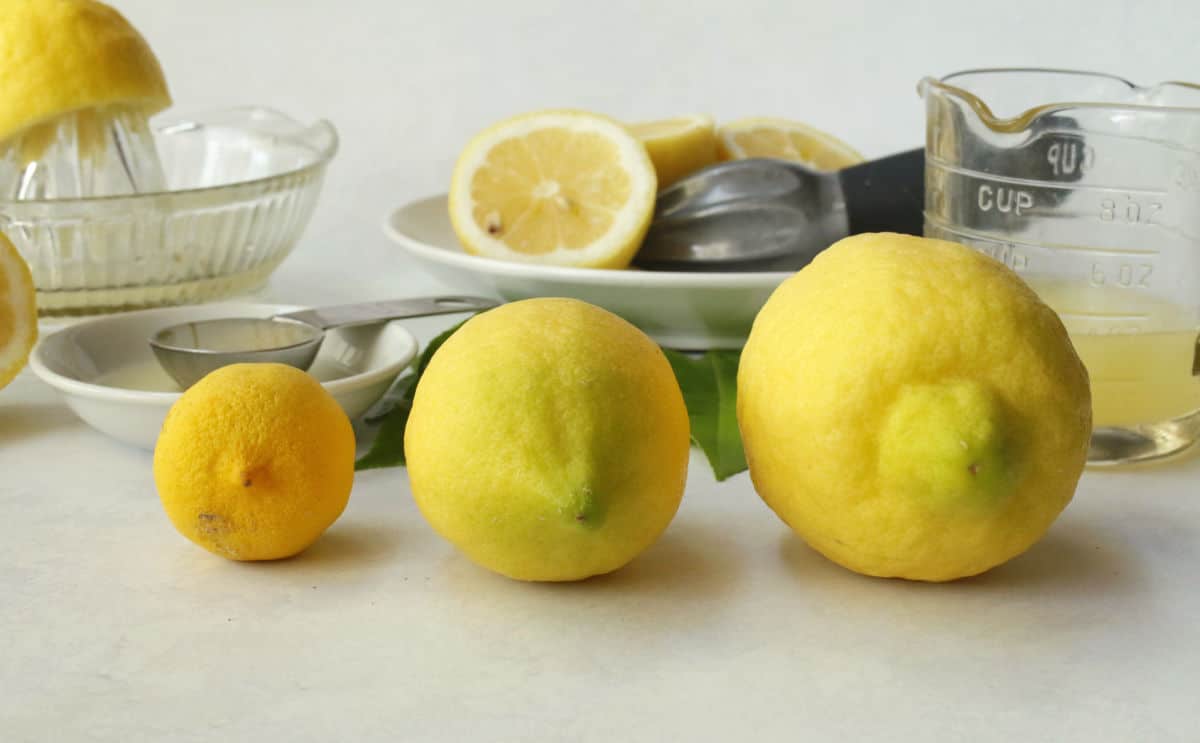
Want to save this recipe?
Enter your email & I’ll send it to your inbox. Plus, get great new recipes from me every week!
This page may contain affiliate links; please see my disclosure for policy details. I earn commissions if you shop through the links on this page.
Yes, I know most of the lemons at the grocery store all look alike. They may look alike on the outside, but once you cut into a lemon, you may find some have a big thick rind, or some have a super-thin rind. Either way, that impacts how much juice is inside.
Also, if you buy produce at farmer’s markets, you can find different varieties of lemons that range from small to medium to large.
How much juice is in one lemon?
By food standards, one medium-sized lemon weighs approximately 3.5 ounces and contains approximately two tablespoons, so if a recipe calls for the juice of one lemon, you should add that. This is mostly the size of lemons sold in stores.
So if a recipe calls for three tablespoons of lemon juice, you most likely will need two lemons to get the right amount of juice for your recipe.
The lemons below came from my two lemon trees. I have two varieties, and each is remarkably different in size.
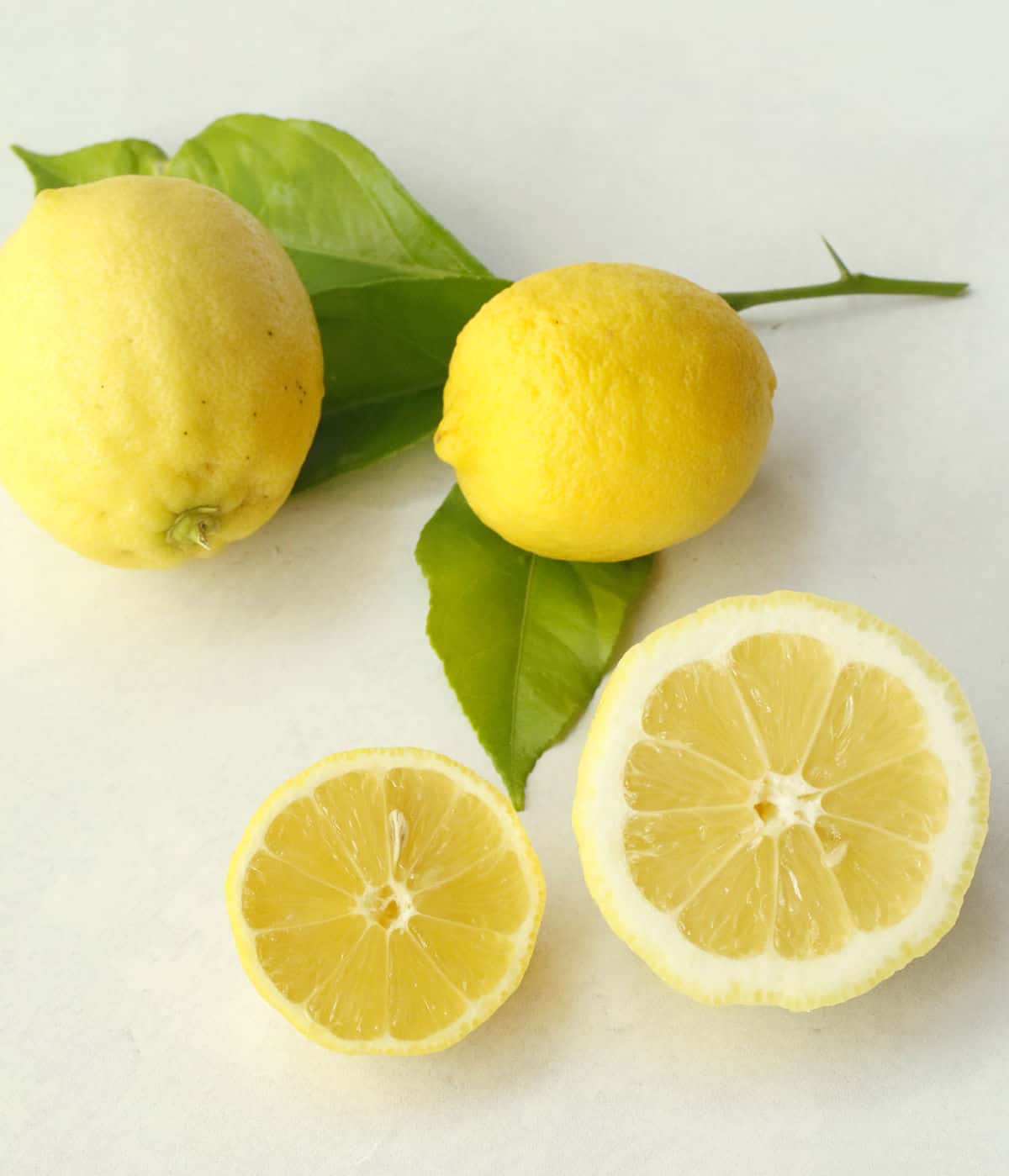
My older tree produces little lemons with a very thin rind. When I cut these open, I am always amazed how much lemon is inside.
My new tree produces very large lemons. The rind is very thick, and the actual amount of lemon inside seems very small.
Here is the difference between the two different lemons. The smaller lemon had one tablespoon + one teaspoon of juice the other lemon had two tablespoons of lemon juice. So next time you need the juice of one lemon you may need two lemons to make sure you have enough juice to make the standard two tablespoon measurement.
The chart below shows how many ounces of juice are in one lemon.
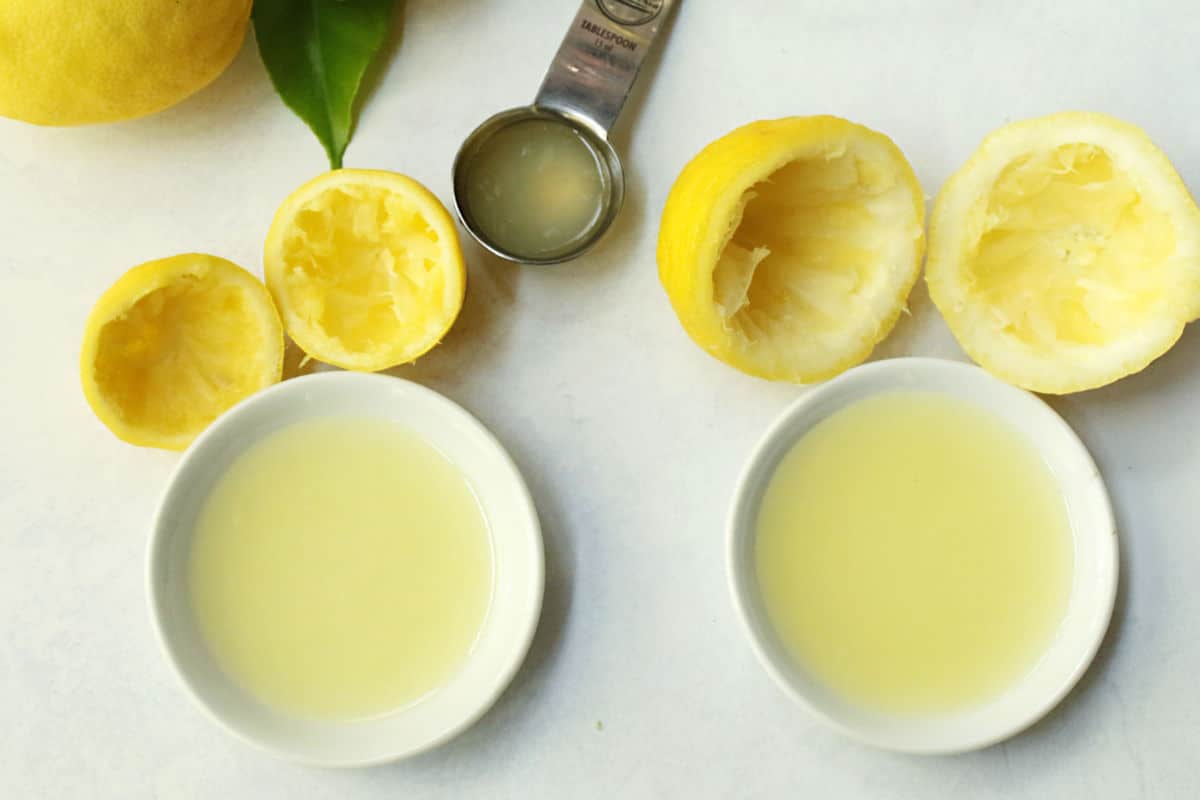
Ponderosa Lemons
If you want a lot of lemon juice, this Ponderosa Lemon weighs two pounds and has two cups of lemon juice. Whew! If you are familiar with pomelos, this lemon is about that size. Cut one open, and you will find lots of seeds and the flavor and acidity of the smaller lemons. Since these types of lemons are not grown commercially and basically are found in backyards, you may never see how magnificent this lemon is.
Just imagine how much lemonade you can make with this big guy or how many lemon meringue pies this would make. A Lot!
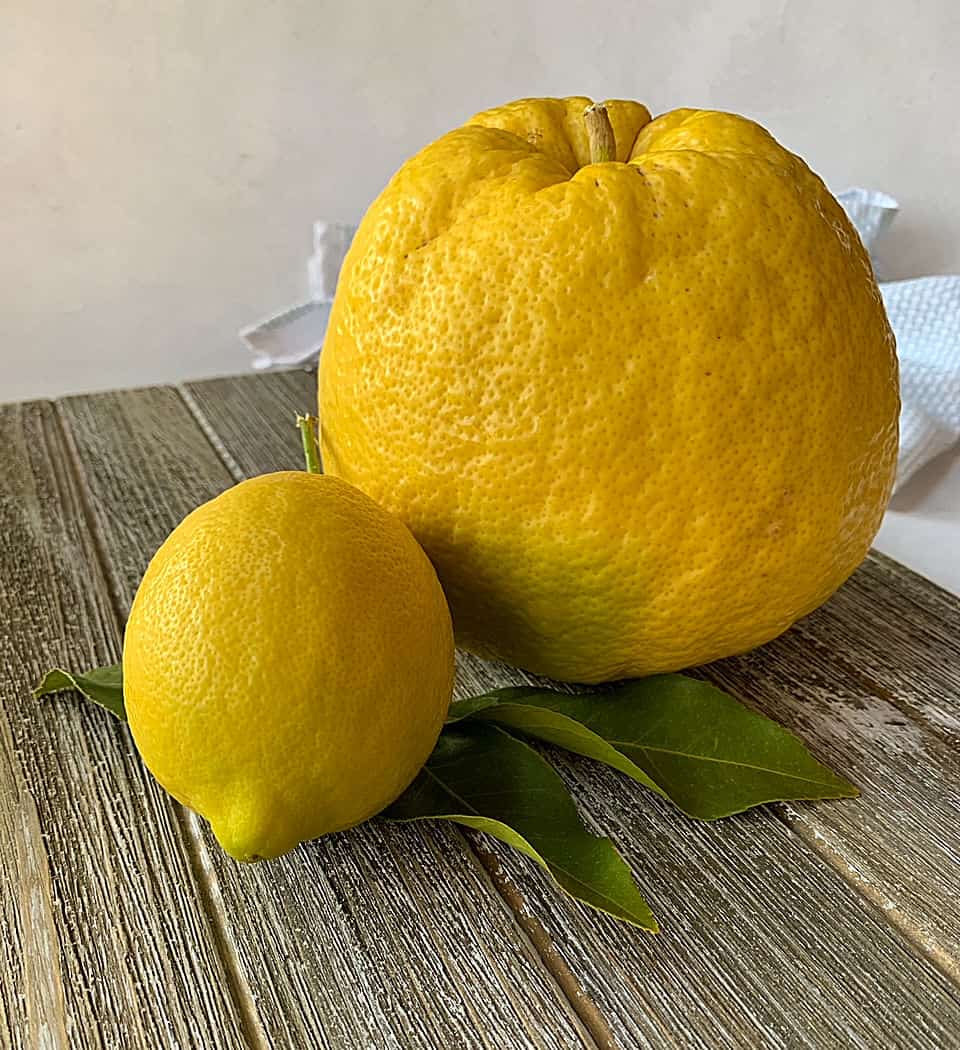
How to juice a lemon
How you juice a lemon can make a difference in the amount of juice you get
- Keep your lemons at room temperature
- Before you juice a lemon, press and roll the lemon between your hands or on a countertop. This will soften the lemon and help release the juice.
- Try microwaving a lemon for 10 seconds before juicing for maximum juice.
- A citrus reamer or a juice press are the easiest tools to use to get the most juice out of a lemon. Just squeeze over a bowl and strain to remove the seeds.
- Hand squeezing the lemon is a quick way to juice a lemon without any tools, just squeeze hard on the cut lemon to get the juice out, then with your fingers, press the inside of the lemon to release more juice
- Another handy tool is the citrus reamer with a bowl. Here, you can juice your lemons directly into a bowl that also strains out the pulp and seeds. This is very handy.
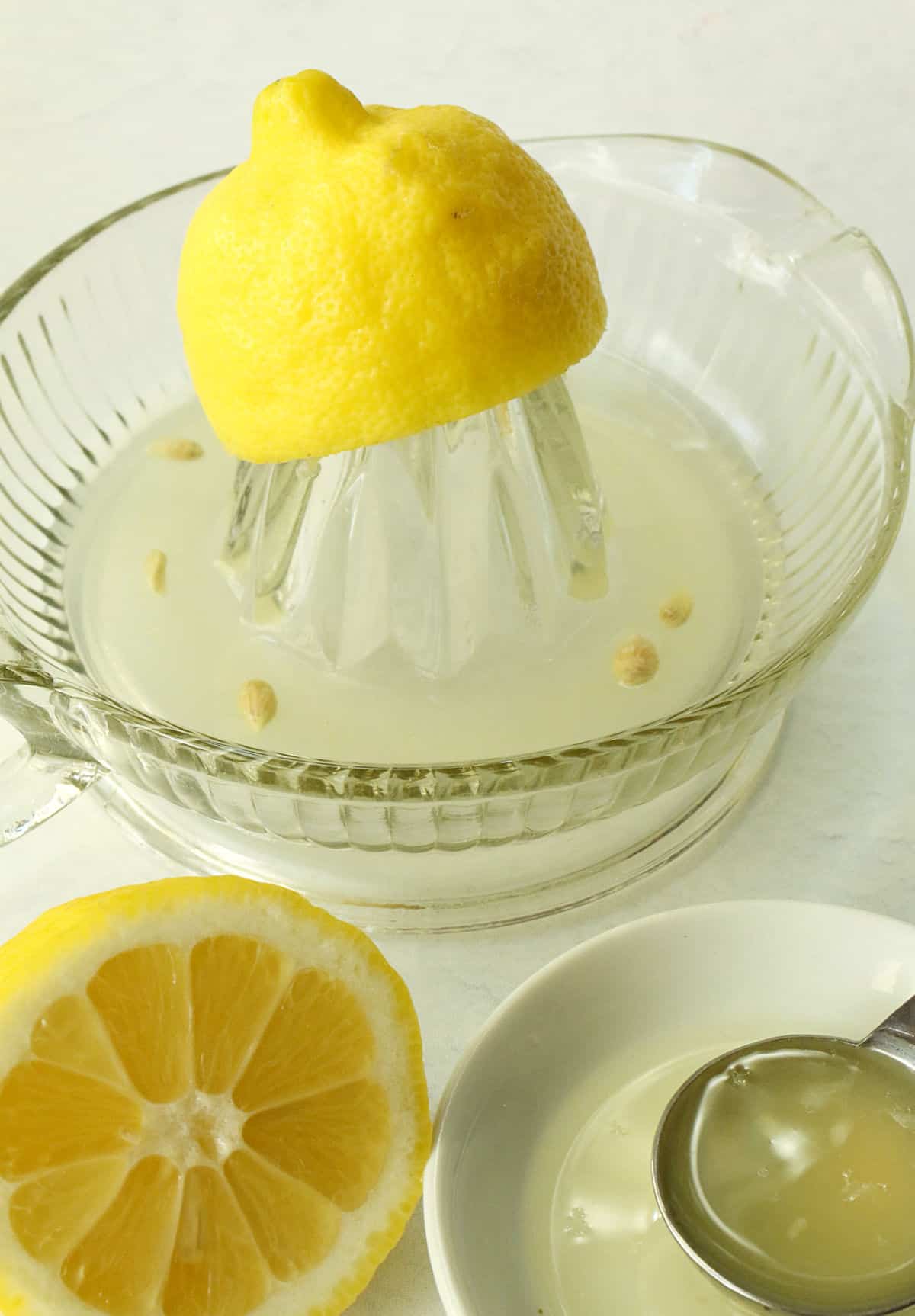
Lemon Juice Chart
This chart will help you determine how many teaspoons, tablespoons, and ounces are in one lemon.
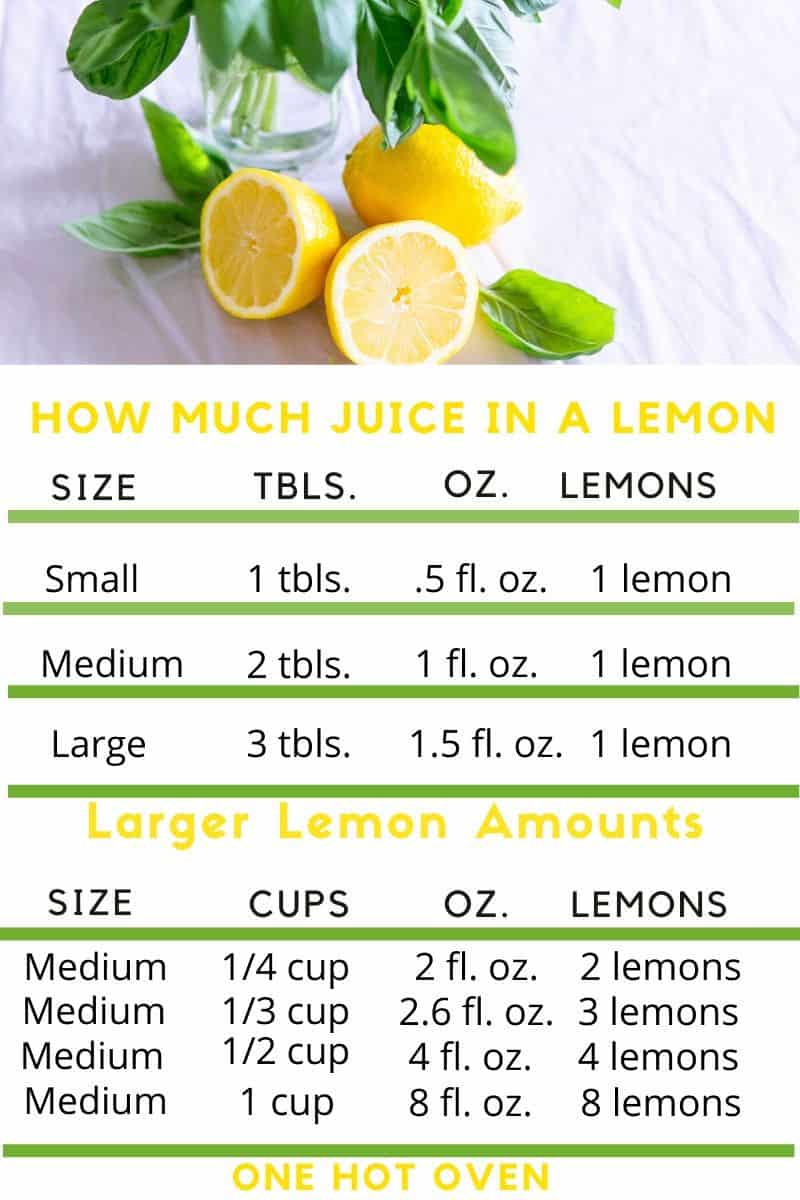
Lots of recipes also use lemon zest. If the recipe calls for the zest of one lemon, that would mean using one medium-sized 3.5-ounce lemon that will yield approximately one tablespoon of lemon zest.
Check out this guide to learn how to zest a lemon. There are several ways to do it.

Lemon zest tip
My suggestion is when you need to juice a lemon, zest it first. Even if you don’t need lemon zest right now, you can freeze the zest and use it later.
Why add lemon zest to a recipe?
- Citrus zest has lots of essential oils that add strong citrus flavors.
- Adding zest to a recipe infuses a bright lemon flavor to sweet and savory baked goods, salad dressings, creamy desserts, icings, and ice creams.
- Sprinkle lemon zest over finished desserts or veggies to add a pretty yellow color and flavor.
Essential tools for juicing and zesting lemons
For juicing you have several options depending on how much juicing you need to do. For juicing one or two lemons for a recipe I like using a wooden citrus reamer. This reamer is simple to use, clean, and stores easily. Another option for a handheld juicer is a metal citrus squeezer press. I prefer the metal types since I have broken several plastic ones.
Try these if you are juicing a lot of lemons. This manual tabletop citrus reamer has a bowl under the reamer to catch the juice and it separates the seeds and pulp, perfect for when you want a lot of juice. And, for lots of lemons go for the electric citrus juicer which is great for making lemonade or juicing lemons for freezing.
For zesting, you want to find the zester that works best for you. Also, replace these because they will become dull over time. I like using this Microplane zester because it allows you to put the zester over the top of a bowl and the zest falls out from the bottom side.
For making long strips of lemon peel for garnish use a channel knife/zester. This has sharp holes at one end that creates nice thin strips of citrus. Another zesting option is this flexible citrus zester that has a cup under the zester to catch the citrus zest. If you have young kids that like to cook this is a great option to keep little fingers safe.
Lemon Recipes
- Lemon Ricotta Muffins are made with olive oil for a deliciously tender crumb and are delicious for breakfast or dessert.
- Lemon Sponge Pie is a unique recipe with a flaky pie crust, lemon custard and a lemon sponge cake on top. It’s so easy and so good.
- Lemon Bundt Cake has baked in lemon pieces that add tanginess to this easy-to-make bundt cake.
- Lemon Baked Ricotta is one of the easiest appetizers that is full of fresh lemon flavors and savory herbs.
- Lemon Cookies with Frosting has lemon in the cookie and the frosting too because you can’t have too much lemon flavor.
- Crispy Lemon Cookies are simple slice-and-bake shortbread cookies that are tender and perfectly lemony.
- Lemon Cake Pie, yes, this is a cake and pie in one dessert and it is fantastic.
- Lemon Blueberry Scones bake up golden brown and are full of fresh fruits.
- Lemon Curd Cookies have a shortbread dough filled with fresh lemon curd.
- Do you know what tastes great with a lemon dessert…Frozen Lemonade, it’s super refreshing.
Pin for later
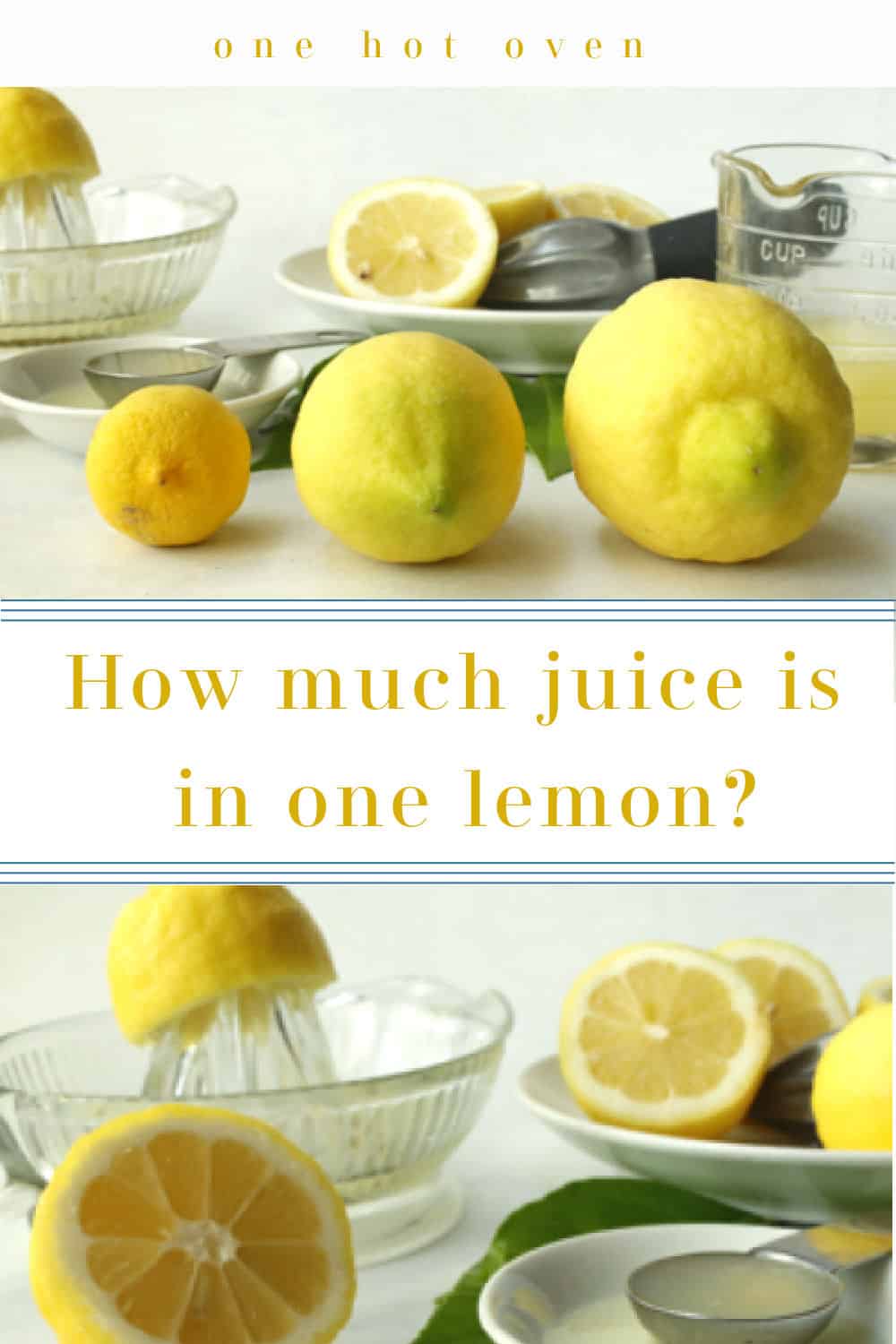
Remember – When Life Gives You Lemons, Make Dessert
Lemon FAQ’s
Look at the skins and pick a bright-colored glossy fruit that feels heavy when you pick it up. If there is any green on the lemon that means it’s not fully ripened. Leathery-looking, dull-skinned fruits mean the lemon is old.
Lemons are best kept in the refrigerator and can last for three to four weeks. If you leave your lemons on the counter they will last a week to two weeks, depending on how warm the area is.
More recipes to make and eat
Follow One Hot Oven
Like what you see? Make sure you are following One Hot Oven for more tasty sweet and savory recipes!
Pinterest |Instagram | Facebook | Twitter |
Thank you for stopping by the One Hot Oven blog. Please leave a comment to say Hello or just let me know what you are baking these days, I always love hearing from fellow bakers. Do you have any questions or want to chat about the recipe? Contact me here, and I’ll be happy to help!
About Jere’
From learning to cook on a farm in Indiana to culinary school in California, my passion for food is never-ending. Turning on my oven to bake something for friends and family is my happy place, and I am glad to be here at One Hot Oven sharing both sweet and savory recipes with all my baking friends.


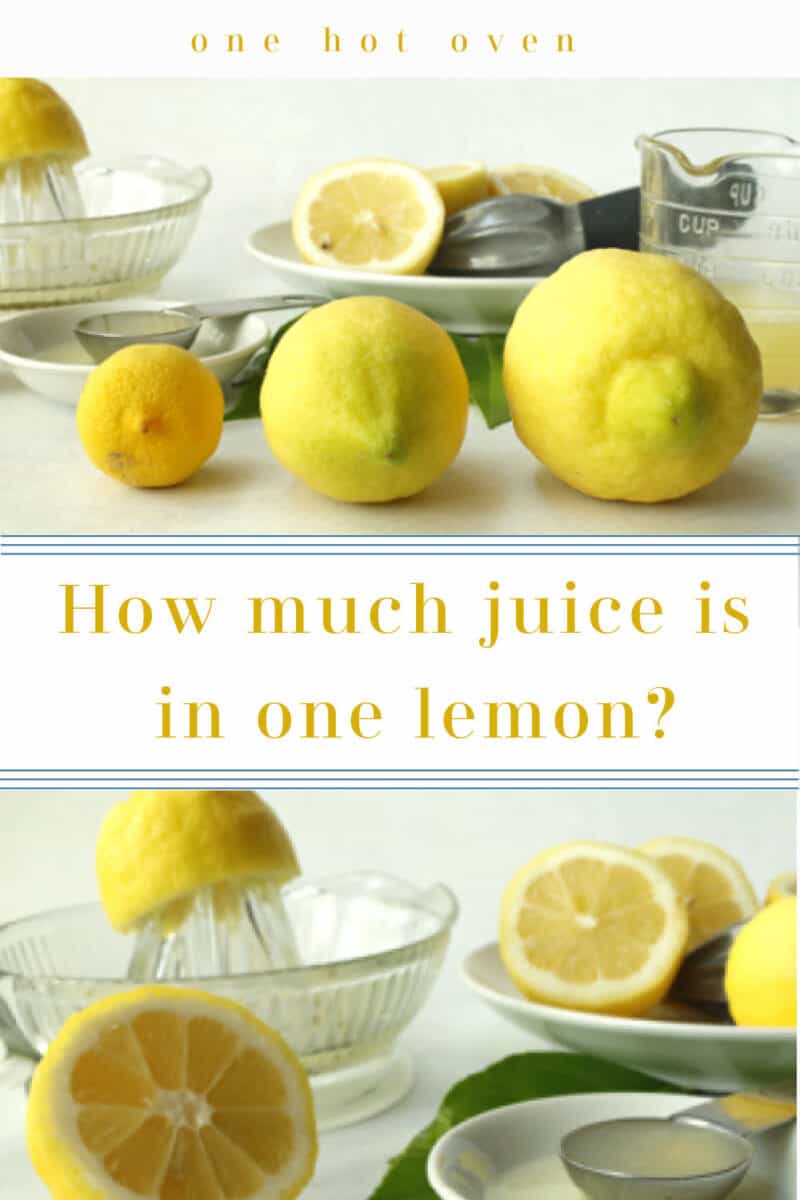






Thank you for an informative post! This is very good information to have on hand, not every lemon is the same! Saving for reference!
So helpful! Always drives me nuts when a recipe says juice one lemon because you’re right they come in such different sizes!
This is a great post, and since not of lemons are created equal, I find that it’s always better to set the juice in ml or Tbs. However, your article is beneficial in having an idea before you cut one.
What an interesting post. Lemons are not created equal. That is why I like when recipes state the correct amount need in measurements. Makes thing much easier.
Yes! You have hit the nail on the head here…I always wonder how much is enough juice when the recipe calls for one lemon’s worth. We used to have a lemon tree so I know that sizing can be pretty random. Thanks for the great information.
Waw… great article. What I want to know here it is. What I don’t want to know here also it was. It’s a piece of complete information about lemon juice. Thanks for sharing this great article.
This is such an amazing article which helps in cooking with lemons. Thank you for sharing such an informative post.
This is such a fun and very useful post! I love that you illustrated the drastic differences in how lemons can vary as well as state what the industry standardized measurements are. Bookmarking for future use Jere!
What great information about lemons. I really enjoyed reading about the different types of lemons and the amount of fresh juice they can provide.
Oooo this is an awesome resource! Always wondered this. Thanks for sharing!
Glad you found the info useful.
Very informative post, it does get confusing sometimes. When the lemons are quite big or sometimes smaller in size. Thank you for sharing.
This is a great post. Here in Italy lemons really do come in different sizes and with a different rind thickness. So, I’ve always just winged it! Now I’ll measure out 2 tablespoons when recipes call for juice from one lemon! Good idea to freeze the zest too!
This is such helpful information about lemons and lemon juice! This makes cooking and measuring with lemons less complicated.
How lucky to have lemon trees in your garden, it’s far too cold here in Wales to grow them outdoors. It’s really good to know how much the amount of lemon juice varies from lemon to lemon. Thanks for sharing.
It’s weird that we can easily grow lemons, grapefruit and limes but no oranges where I live.
It was fun to read this, and it explains why without even thinking about it I always make sure I have an extra lemon just in case the one I start with is small or dry. Great, thoughtful tips and observations!